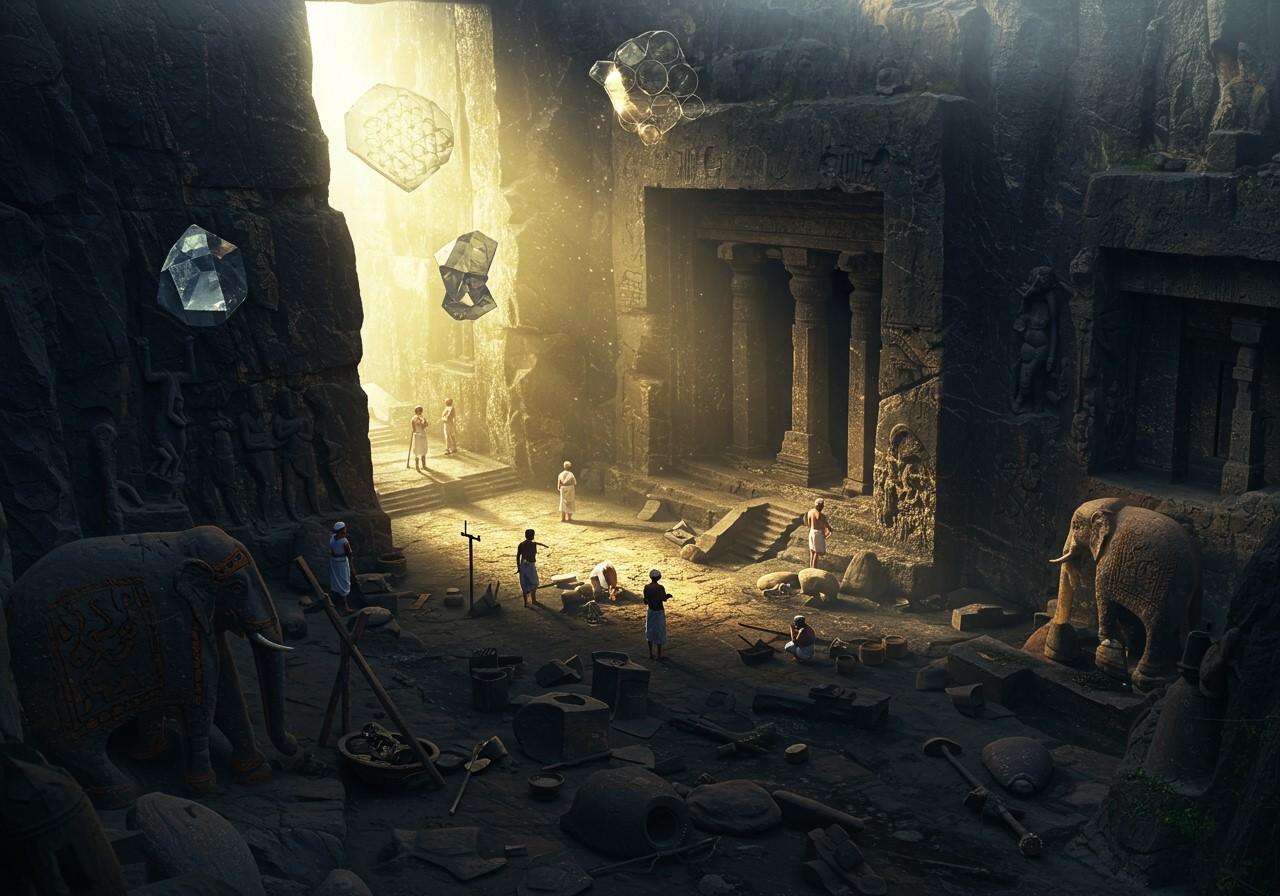
Embark on a journey to the fascinating world of Barabar Caves, an ancient treasure nestled in the heart of India. These caves, steeped in history and mystery, offer a glimpse into the architectural brilliance and spiritual practices of ancient Indian civilizations. In this blog post, we will delve into the secrets of Barabar Caves, uncover intriguing facts, and answer common questions, making these caves a must-visit for culturally rooted Indians and history enthusiasts alike.
Location and Accessibility of Barabar Caves
Barabar Caves are situated in the Jehanabad district of Bihar, India, approximately 24 kilometers north of Gaya. Their location amidst the picturesque Barabar hills adds to their charm. The proximity to Gaya, a significant pilgrimage site for Buddhists, further enhances their historical importance.
Getting There:
- Nearest Airport: Gaya Airport offers convenient access for domestic and international travelers.
- Nearest Railway Station: Gaya Junction is well-connected to major cities across India, making it easily accessible by train.
Best Time to Visit:
For a pleasant experience, plan your visit between October and March to avoid extreme weather conditions.
Nearby Attractions:
- Mahabodhi Temple: Explore this important Buddhist site in Gaya, known for its historical and spiritual significance.
- Vishnupad Temple: Visit this significant Hindu temple in Gaya, revered by devotees for its religious importance.
The local culture and traditions surrounding the area offer a rich and immersive experience, adding to the overall charm of visiting Barabar Caves.
Exploring the Caves: A Glimpse Inside
The Barabar Hill Caves, dating back to the Maurya Empire (322-185 BCE), are the oldest surviving rock-cut caves in India. The complex comprises four main caves: Karan Chaupar, Lomas Rishi, Sudama, and Visvakarma, each carved from granite and monolithic rock.
- Lomas Rishi Cave: This cave is renowned for its intricate carvings, including the Mauryan ‘Chaitya arch,’ a significant architectural element. The polished interiors and smooth finishes further showcase the advanced craftsmanship of the time.
- Sudama Cave: Like the other caves, Sudama features Ashokan inscriptions, offering valuable insights into the history and cultural context of the Maurya Empire. The precision-cut interiors and attention to detail are remarkable.
- Karan Chaupar: Carved from solid granite, Karan Chaupar exemplifies the engineering prowess of ancient India. Its unique layout and precise construction contribute to the overall mystique of the Barabar Caves.
- Visvakarma Cave: Visvakarma cave, also known as the Carpenter’s Cave, stands as a testament to the advanced artistic and engineering skills of ancient Indian artisans. The intricate carvings and smooth, polished surfaces highlight the remarkable precision achieved in its construction.
Barabar Caves: Intriguing Facts and FAQs
These caves, dating back to the 3rd century BCE during Emperor Ashoka’s reign (circa 268 to 232 BCE), hold religious significance. The inscriptions found within the caves provide glimpses into ancient languages and scripts.
Unique Features:
- Advanced Techniques: The advanced rock-cutting and polishing techniques used in the caves’ construction resulted in remarkably smooth and polished interior surfaces, which contribute to their unique acoustic properties.
- Acoustics: The caves’ acoustics are a subject of fascination for researchers and visitors alike. The echo effect created by the polished surfaces adds to the caves’ mystical ambiance.
Frequently Asked Questions:
Where are the Barabar Caves located? The Barabar Caves are situated in the Jehanabad district of Bihar, India.
How many caves are there? The Barabar Caves complex consists of four main caves: Lomas Rishi, Sudama, Karan Chaupar, and Visvakarma.
What is their historical significance? As the oldest surviving rock-cut caves in India, dating back to the Maurya Empire (322-185 BCE), the Barabar Caves provide invaluable insights into ancient Indian architecture, engineering, and religious practices.
Poojn.in: Connecting You with Ancient Heritage
Poojn.in helps you connect with the spiritual heritage of ancient sites like the Barabar Caves by offering authentic puja items and traditional offerings. Inspired by the caves’ Buddhist and Hindu heritage, we provide:
- Pure copper and brass items ideal for worship rituals, reflecting the traditional materials used in ancient practices.
- Traditional incense sticks and dhoop perfect for meditation and creating a sacred atmosphere, reminiscent of the spiritual practices within the caves.
- Natural cotton wicks (battis) for aarti ceremonies, essential for traditional Hindu rituals.
- Pure ghee for sacred lamp lighting, an integral part of many religious practices.
- Camphor tablets for purification rituals, aligning with the cleansing aspects of spiritual practices.
Visit poojn.in to explore our complete collection of puja items. We deliver across India with secure packaging.
Conclusion
Barabar Caves stand as a testament to India’s rich history and heritage. Their preservation ensures that future generations can appreciate these ancient marvels. As you plan your visit, immerse yourself in the mysteries of Barabar Caves and explore the cultural wealth they offer. Whether you’re deeply rooted in tradition or simply curious about our ancient past, Barabar Caves promise an enriching and unforgettable experience.


